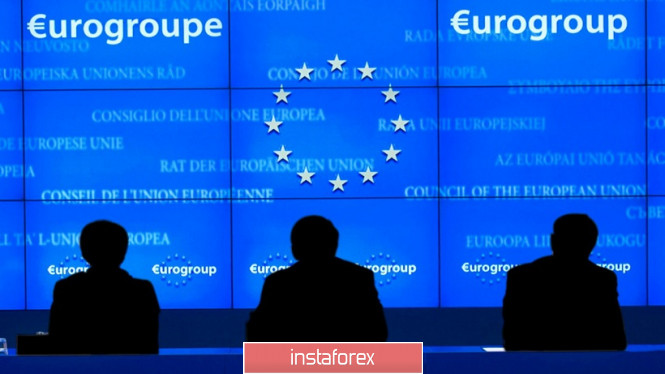The European currency is balancing on the edge of a cliff: if the EU Ministers do not agree on a plan to support the economy within the next day, the EUR/USD pair will collapse not only into the seventh figure, but also return to the lows of this year, that is, to the level of 1.0650. Today's news that the 16-hour negotiations (which did not stop even at night) ended in failure put a lot of pressure on the euro: the bears fell by 70 points in just a few minutes, to the base of the eighth figure. However, the bulls were able to seize the initiative in time, keeping the price from falling into the area of the seventh figure. It became known that the EU Finance Ministers only took a pause in the protracted negotiations. At the same time, officials voiced quite optimistic forecasts: according to them, the parties "came close to a deal", but still could not conclude it – the dialogue will continue on Thursday, April 9.

The current situation can be characterized by the phrase: "hit or miss". The fact is that the American economy received support from the state a week and a half ago. The adoption of the relevant bill was also preceded by political battles, which, however, ended quite quickly. Republicans and Democrats found a compromise and did not block the law, allocating $2 trillion to fight the coronavirus and neutralize the negative consequences of the epidemic. This money went to additional funding for the health care system, business support, and direct payments to Americans.
Similar steps were expected (and are still expected) from Brussels. Moreover, the Europeans had a chance to even get ahead of the Americans in this regard – the first online summit of EU leaders was held on March 26, but the parties could not agree on the scale and tools to support the economy. The parties went "to the corners of the ring", giving two weeks to eurozone Finance Ministers to develop possible options. In other words, a kind of blitzkrieg to implement the "Marshall Plan" failed, and the situation moved to the stage of protracted negotiations.
This is why EUR/USD traders had such high hopes for yesterday's talks (which ended only this morning). The Reuters insider also added fuel to the fire, according to which the Europeans "have almost agreed" on a 500-billion-dollar financial aid package. In the final version, this package should have included the European Commission's program for financing schemes to protect jobs (the amount of the program is 100 billion euros); the European Investment Bank's business support program - primarily for small and medium-sized enterprises (the amount of the program is 200 billion euros); and the program to support the most vulnerable and affected states by COVID-19 (Italy, Spain, and France). This program of 240 billion euros is planned to be implemented through the European stabilization mechanism.
But after long negotiations, the Eurogroup could not come to a consensus. The main stumbling block was the disagreement between Italy and the Netherlands over the terms on which eurozone governments will raise loans to fight the epidemic. Germany and the "Northern countries" that joined it (Austria, the Netherlands, Finland, and Estonia) still oppose the issue of joint so-called crown bonds. In turn, Italy and Spain still insist on this option. The negotiations again reached an impasse, after which the parties took a pause to reflect on the situation and determine further steps.

The euro/dollar pair similarly froze in anticipation. Traders do not risk opening large positions – too much money is at stake. And not only of an economic nature, but also of a political one. For the second week, the press has been saying that European countries are undergoing a "test of strength" in the context of solidarity and unity. And if the EU leaders fail this test, the popularity of right-wing and far-right political forces will increase in many countries of the alliance. A similar situation was experienced by Greece when Syriza came to power in 2015 in the wake of the debt crisis and anti-European sentiment. And the current crisis can also cause very serious damage to the European integration processes. For example, Italians are quite sensitive to the position of Germany, especially against the background of increased mortality from COVID-19 and a complete "freeze" of business in their country. According to Conte, now it is not just about the current differences between his country and the German Chancellor, but about a "hard and frank confrontation" about the future course of the European Union.
In other words, today, Europe is sending alarm signals. Brussels shows an inability to act quickly, decisively and, most importantly, in a coherent manner. And if the situation does not change dramatically within the next day, the European currency will be under very strong pressure. To sum up, it should be noted that any trading decisions on the pair at the moment are risky. Now no one can say exactly what scenario will unfold further events. The parties can either come to a compromise or take another pause. In the first case, the pair will test the 10th figure. In the second case, it will be at least in the area of the local minimum of 1.0763. Therefore, both long and short positions on the pair are currently risky – to make trading decisions, you need to wait for the results of tomorrow's negotiations.
The material has been provided by InstaForex Company - www.instaforex.com